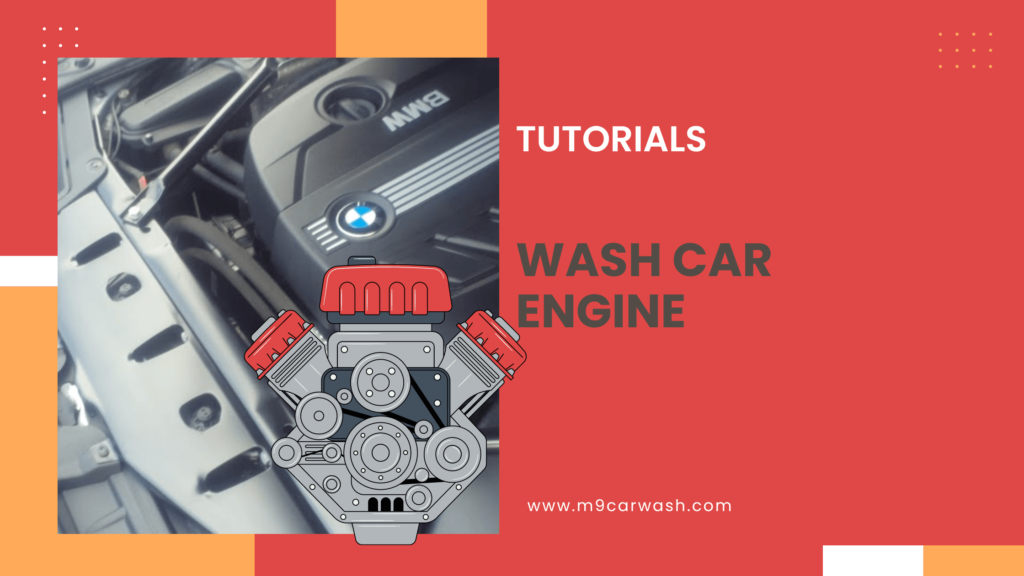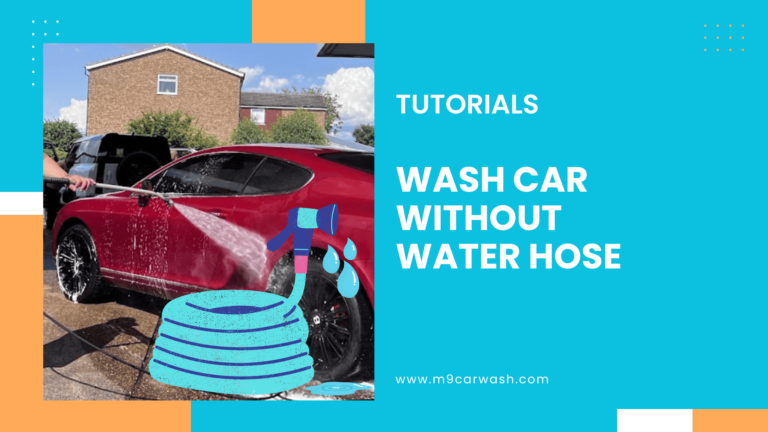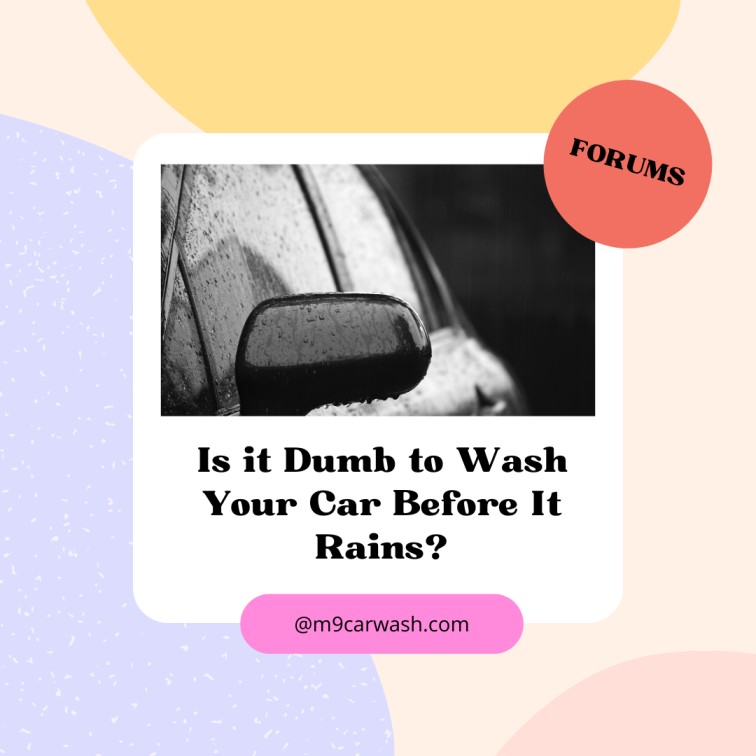Yes, you can wash a car engine. Check the engine is cool, cover sensitive parts, apply a degreaser, gently scrub, and rinse with low-pressure water. Dry the engine thoroughly and remove protective covers before starting. This method keeps the engine clean without causing damage.

How to Safely Clean Your Engine?
Here’s how to safely clean your engine at a car wash:
- Cool the Engine: Ensure the engine is completely cool before starting to avoid cracking or warping components.
- Cover Sensitive Areas: Use plastic bags or covers to protect the battery, air intake, alternator, and any exposed wiring or electronic components from water.
- Pre-Rinse: Lightly mist the engine bay with water using low pressure to loosen dirt and grime. Avoid using high pressure to prevent damaging components.
- Apply Degreaser: Spray a non-corrosive, engine-safe degreaser on the engine and surrounding components. Let it sit for 5-10 minutes to break down grease and oil.
- Scrub Gently: Use a soft-bristle brush to scrub away stubborn dirt, especially in hard-to-reach areas.
- Rinse Thoroughly: Gently rinse off the degreaser with low-pressure water. Ensure you don’t soak sensitive areas.
- Dry Completely: Use a microfiber towel or compressed air to dry the engine bay thoroughly. Remove all plastic coverings once dry.
- Inspect and Reassemble: Check that all covers are removed and everything is dry before starting the engine.
Avoid Harsh Chemicals: Use only engine-safe degreasers and cleaners.
Be Gentle: Avoid using high-pressure water directly on the engine components.
Inspect Before Starting: Ensure everything is dry and free of moisture before turning the engine on.
Preparing Your Engine for Cleaning
Before washing your car engine, let the engine cool down. It’s best to wait at least 30 minutes after driving.
A hot engine can damage components during cleaning.
Next, gather the supplies. Here’s what I use:
- Plastic bags and rubber bands to cover electrical components
- Safety glasses and gloves to protect myself
- Electrical tape to seal any connections
I start by disconnecting the negative terminal of the battery. This helps prevent any electrical issues while I clean. I also cover parts like the alternator, fuse box, and distributor cap. Using bags keeps water from getting inside, which is important for the battery and electrical wires.
I check for any loose wires, spark plugs, and coil packs. Securing them ensures nothing gets wet. I pay attention to the dipstick and make sure it’s well-protected too.
Finally, clear the engine bay of dirt, debris, and grime. Using a soft brush helps remove built-up dust. This makes washing much easier and more effective later.
Steps for Washing Your Car Engine: Tutorials
Here’s how to clean:
Step 1: Apply Degreaser and Scrubbing
First, get an Engine degreaser, hand brushes, and an all-purpose cleaner.
Start by opening the hood and locating the engine bay. If there’s debris, vacuum or blow it out with a leaf blower or air compressor.
Apply a degreaser directly to the dirty areas of the engine, letting it sit for a few minutes.
This allows the cleaner to break down grease and grime.
Then, I usually take a hand brush or a wire brush to scrub the engine surfaces gently.
It’s important to avoid sensitive areas. A brush helps reach tight spots. You can also include foam for extra cleaning power.
Step 2: Rinsing and Protecting
Once I’ve scrubbed the engine, it’s time to rinse it off.
I use a garden hose with low water pressure to avoid damaging any components and carefully rinse all areas of the engine bay, ensuring that no cleaner remains.
After rinsing, protect sensitive parts by covering them with plastic or towels.
This stops water from reaching electrical connections or filters.
If needed, you can spray a protective solution to avoid moisture build-up.
Step 3: Drying and Final Touch
To dry the engine, use a clean towel or microfiber cloth.
Wipe down surfaces to remove any remaining moisture or use a leaf blower or air compressor to blow air into tight spaces.
Finally, double-check that all covers are removed and the battery connections are secure.
After-Care and Maintenance Tips
After washing your car engine, proper after-care is important to keep it in good shape.
Dry the Engine Well: Use a clean towel or chamois to wipe down the engine.
Warm the Engine: Running the engine for a few minutes can help dry clean any remaining moisture.
Check Components: Make sure to regularly inspect valve covers and other components for any loose parts. I often tighten caps and covers to prevent leaks.
Use Zip Ties: Use zip ties for any loose wires or components to keep everything secure and reduce the risk of short circuits.
Dilute Cleaning Solutions: If I use products like baking soda, I always dilute them with warm water first. This ensures effective cleaning without damaging sensitive parts.
Schedule Regular Maintenance: Set a reminder every few months to check my engine. Regular maintenance keeps everything running smoothly and extends the life of the engine control units and distributor caps.
Is it safe to spray your engine with water?
Yes, it can be safe to spray your engine with water as long as you take precautions such as,
- The engine is cool before starting.
- Cover sensitive electrical components to prevent damage.
- Use low-pressure water to minimize risks.
Avoid using high-pressure water as it can force moisture into sensitive areas.
Don’t wash a hot engine, as sudden temperature changes can cause damage. Also, skip harsh chemicals that can harm engine parts.
Can you wash a car engine while it’s running?
No, It is not safe to wash a car engine while it’s running.
You risk damaging electrical components and may create a fire hazard. Always wash the engine when it is turned off and has cooled down.
How can you safely wash a car engine at home?
To wash your engine at home, follow these steps:
- Let the engine cool down.
- Next, cover sensitive areas with plastic.
- Spray a degreaser, let it sit, then scrub with a soft brush.
- Finally, rinse with low-pressure water.
When using engine cleaner liquids, read the instructions carefully.
Apply the cleaner evenly and let it sit for the recommended time.
Use a brush for a good scrubbing but avoid abrasive materials to prevent scratching engine parts.
How much does a professional engine cleaning typically cost?
The cost of a professional engine cleaning usually ranges from $50 to $150.
Prices can vary based on the service provider and any additional services you might need.
Always check what’s included in the price before agreeing to the service.
You can also visit us for our engine wash service via our booking form.






